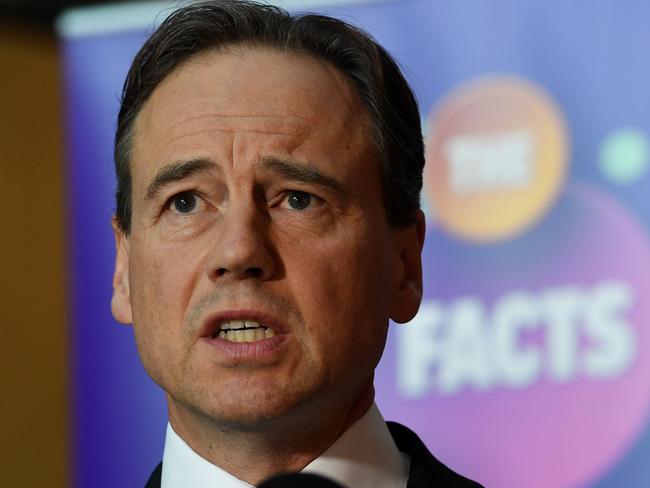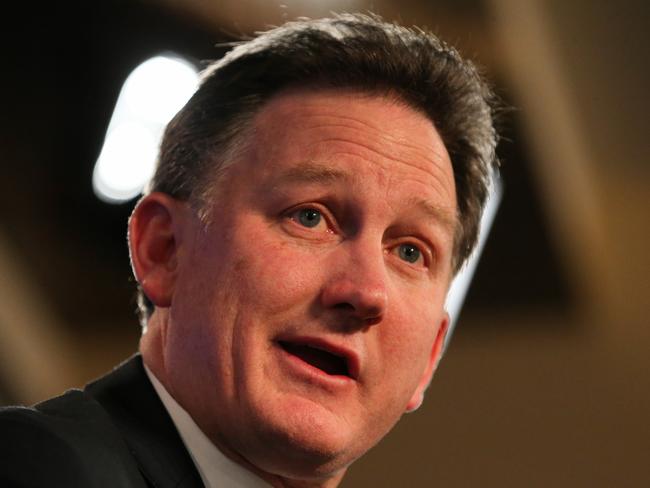GPs’ fees up $1 as health funds ask for $200 premium rise
CASH-strapped families are facing soaring medical bills with health funds hiking premiums by and GPs increasing their fees.
Illness
Don't miss out on the headlines from Illness. Followed categories will be added to My News.
CASH-strapped families are facing soaring medical bills with health funds hiking premiums by $200.
On top of this, doctors fees are set to jump $1 per visit after the Australian Medical Association last week recommended GPs increase their fees by $1 to $79 for a standard consultation.
Health funds are on deadline to present Health Minister Greg Hunt with their applications for their annual April premium rises by November 10.
They are expected to seek permission to raise premiums by around four per cent, adding around $200 to the average family policy which will cost $4700 from April.
The price of a single’s policy will rise by around $100 a year to $2350.
This rise is double that of inflation and comes even though the government recently announced $1.5 billion in cuts to the prices health funds pay for medical devices like hip and knee replacements.
Official government data shows Australia’s largest two health funds each charged $1 billion more in premiums than they paid out in benefits last financial year and made sizeable net earnings.
The Operations of the Private Health Insurers annual report shows Medibank, which was privatised in 2014, had a net margin of 7.7 per cent, BUPA had a net margin of 6.7 per cent.
Medibank charged members $1 billion more in premiums than it paid out in benefits, BUPA charged $961,652 million more in premiums than it paid out in benefits.
BUPA has now officially overtaken Medibank as the nation’s largest health fund with 1777 million policies to Medibank’s 1.776 million.

Two in three patients get GP care for free when their doctor bulk bills but one in three people are charged upfront fees by their doctor.
Each year the AMA recommends the fee doctors should charge to cover practice costs, rising staff wages and medical indemnity fees.
The latest fee rises of around $1 per standard GP visit took effect on November 1.
Patients will have to bear the full brunt of the increase because of the Turnbull Government’s freeze on Medicare rebates.
Medicare rebates have been frozen at the 2014 level of $37 while doctor’s fees have continued to rise.
The rebate freeze became a huge issue in the 2016 election campaign and almost cost Malcolm Turnbull government.

The latest fee rise by doctors means the Medicare rebate now covers less than half the cost of a doctor’s visit.
Patient’s whose doctor charges the AMA fee will be $42 out of pocket.
The hefty rise in medical costs come on the back of a 20 per cent rise in electricity charges that has added $600 a year to some people’s power bills.
People’s hip pockets are being pummelled at the same time as are growing by just 1.9 per cent a year the lowest growth in two decades.
Private Healthcare Australia chief Rachel David said health funds have experienced large growth in spending on medical devices health services and in public and private hospital costs which had increased at many times the inflation rate and that was the reason for the premium increases.
For every one dollar health fund members paid in premiums, they received 86 cents back in benefits, she said.
Next year’s premium rises would be 1 per cent lower than they would have been as a result of the federal government health reforms announced a few weeks ago, Ms David said.
AMA president Dr Michael Gannon said practice costs – such as wages for staff, rent, electricity, computers, continual professional development, accreditation, and indemnity insurance – have all increased, and must be met from the fees charged by the medical practitioner.
“Medical practices can’t absorb these increasing costs for five years in a row. They have to increase their fees – and without an increase in the Medicare rebate, patients will have to pay more out of their own pockets,” he said.
This year’s 1.86 per cent rise is lower than last year’s average rise of 2.35 per cent, he said.



